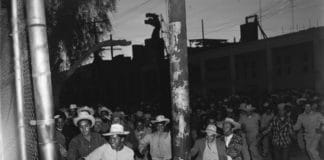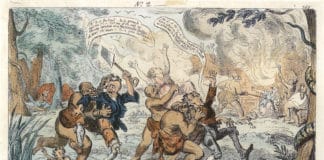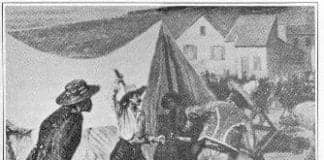Tags U.S. Department of Labor Manpower Administration Office of Manpower Policy Evaluation and Research
Tag: U.S. Department of Labor Manpower Administration Office of Manpower Policy Evaluation and Research
Joe Debro on racism in construction, Part 15
A 1968 book-length report, titled “A Study of the Manpower Implications of Small Business Financing: A Survey of 149 Minority and 202 Anglo-Owned Small Businesses in Oakland, California,” was sent to the Bay View by its author, Joseph Debro, prior to his death in November 2013, and his family has kindly permitted the Bay View to publish it. The Bay View is publishing the report as a series. This is Part 15 of the report.
Joe Debro on racism in construction, Part 11
Mexican immigration 1900-1960: The patterns established during the last century continued into the 20th as well. Successive waves of immigrants came to this country from Mexico as a response to American labor demands in the industrial and agricultural sectors. Before 1910, Mexican laborers were employed generally without union status as agricultural workers, as miners, as maintenance and construction workers.
Joe Debro on racism in construction, Part 10
During this same period, another major change was taking place. The Southern gold mines were running out, and quartz mining filled the vacuum. Wages by the summer of 1851 were $20 and $30 per week including board; now a new type of miner was needed, one who would work for wages. Yankees in California preferred to remain independent in the hopes of becoming owners of rich mines rather than working for others.
Joe Debro on racism in construction, Part 9
In the late 19th and early 20th centuries, Americans of Spanish and Mexican descent remained concentrated in what had been the Spanish and Mexican colonial territories in the southwestern United States: Arizona, New Mexico, Colorado, Texas and California. During the Spanish and Mexican colonial regimes, these territorial possessions were only sparsely populated with missionaries, soldiers, a few ranchers and farmers, and very few persons of commerce and trade.
Joe Debro on racism in construction, Part 8
Negroes in the labor force: Persons who are employed or unemployed but able to work and actively seeking a job are considered to be part of the labor force, whereas persons who are neither employed nor unemployed, such as retired persons, children, non-working students and full time housewives, as well as “unemployables,” are not considered as part of the labor force.
Joe Debro on racism in construction, Part 6
As more and more white unions gained entrance into the AFL, more and more Negroes lost jobs and the opportunity to enter others. Astute observers of the time noted that Negroes were being excluded from occupations which they once held under slavery, that Negroes were being segregated into separate locals in trades where whites and Blacks formerly worked side by side, and that the economic plight of the Black was growing worse while unionism advanced.
Joe Debro on racism in construction, Part 5
The movement from farm to city forced the proletariat to unite in order to wrest decent pay and working conditions from large corporations, which tended to control entire industries as well as to reduce competition from immigrants and others, including Negroes. The history of the American labor unions, like that of big business itself, is filled with examples of racism, nationalism and exclusionism.
Joe Debro on racism in construction, Part 4
Black labor and business in the North before 1862: Labor and business conditions were slightly better for Negroes in the North than in the South, but discriminatory practices were far from absent. Unlike the South, where slaves were protected in their crafts through the paternalistic assistance of their white masters, Northern free Negroes were faced with severe competition from immigrant workers who were preferred over native Blacks.
Joe Debro on racism in construction, Part 3
Here we attempt to trace some of the historical antecedents and current socioeconomic processes that have served to prevent Black and Mexican American entrepreneurs from being assimilated into the mainstream of national business activities. In so doing, we must examine the evolution of Negro and Mexican American labor in the United States and its relationship to white-controlled labor unions, business and government.











